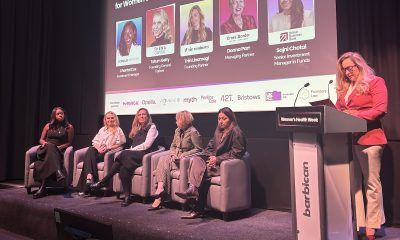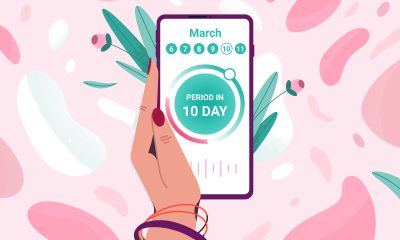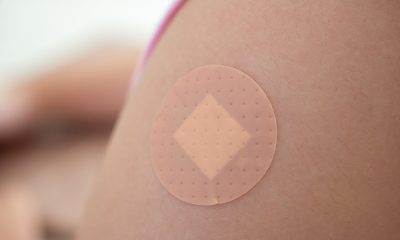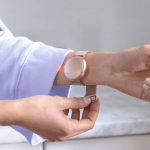News
Partnership to develop digital solutions to tackle endometriosis-related pain
The collaboration aims to provide digital solutions to measure pain in patients with endometriosis

The Tokyo-based pharmaceutical company Chugai and the biotech firm Biofourmis have announced a partnership to develop virtual care solutions for endometriosis-related pain.
The two companies have said that the collaboration will focus on the development of measurement technology for pain associated with endometriosis, advancing progress on a technology platform for a “data-driven” pain measurement, virtual speciality care delivery for endometriosis patients in the US and utilisation of data collected for the treatment of endometriosis pain.
Endometriosis affects approximately 10 per cent of all women of reproductive age and 70 per cent of women with chronic pelvic pain, resulting in a reduced quality of life.
The standard treatment is care with hormone-related drugs, and if the pain can’t be controlled with the drugs, the only treatment is the surgical removal of the endometriotic tissue.
Since pain is a subjective symptom, experts suggest it can be difficult to accurately convey to family members and healthcare professionals the degree of pain patients experience. In addition, access to early diagnosis and treatment of endometriosis is inadequate.
Chugai and Biofourmis have teamed up to develop a new assessment of pain in patients with endometriosis using a biosensor and an AI-based algorithm using Biofourmis’ platform.
“Since 2020, we have partnered with Biofourmis to understand the pathophysiology of endometriosis through the joint development of an objective evaluation of pain associated with the disease,” said Chugai’s president and CEO, Dr Osamu Okuda.
“Through this new partnership, with the aim of further advancement, we will work toward realising patient-centric healthcare.
“In addition, we will strive to deliver new value to patients as part of the Insight Business outlined in our growth strategy, TOP I 2030.”
Biofourmis founder and CEO, Kuldeep Singh Rajput, said: “Chugai and Biofourmis have already seen highly promising results in our work together to objectively quantify pain by identifying digital biomarkers in patients with endometriosis.
“Expanding this collaboration from research and development to real-world use demonstrates the scalability and flexibility of Biofourmis’ end-to-end platform and solutions for both drug development and healthcare delivery.
“Our focus is on solving the biggest pain points in care delivery and pharma R&D, and this patient-centered collaboration with Chugai is a leading example.”
Wellness
FDA removes warning label from menopause drugs
News
Woman files lawsuit claiming fertility clinic ‘bootcamp’ caused her stroke

A London executive is suing a fertility clinic, alleging its IVF treatment led to her suffering a stroke.
Navkiran Dhillon-Byrne, 51, began private IVF treatment at the Assisted Reproduction and Gynaecology Centre (ARGC) in Wimpole Street, London, in April 2018.
Ten days after her treatment ended, on 28 April 2018, she suffered a stroke, which her lawyers say has left her with ongoing vision problems.
Ms Dhillon-Byrne is now suing the clinic and its head, Mohamed Taranissi, for negligence and breach of duty, saying medics failed to give her sufficient warnings about stroke risks linked to IVIg immunotherapy (intravenous immunoglobulin) – a one-off add-on treatment designed to moderate the body’s immune responses during pregnancy.
The clinic and Dr Taranissi deny liability, saying Ms Dhillon-Byrne was fully informed of the risks.
They also dispute that IVIg caused her stroke.
Central London County Court heard that Ms Dhillon-Byrne, chief marketing officer at the City of London base of an international software company, turned to private treatment after the NHS was unable to fund her IVF in 2014.
She had an unsuccessful attempt at another London clinic before choosing ARGC. She told the court she had been trying to have a child since 2014.
She said she selected ARGC after a friend recommended it, praising what they described as high success rates.
The clinic’s website describes its approach as “IVF boot camp” and promotes “in-depth investigations, daily monitoring and real-time treatment adjustments.”
Ms Dhillon-Byrne says she was not warned of the “specific” risks of thrombosis – blood clotting that can lead to stroke – in relation to the IVIg therapy.
She also says the clinic overstated her chances of success and failed to secure her “informed consent” before treatment began.
She argues that, had she been given a clear picture of her chance of a successful pregnancy, she would not have consented to IVF and the supplemental IVIg therapy.
Denying Ms Dhillon-Byrne’s claims, the clinic’s KC, Clodagh Bradley, told the court that the success rate advice given was “accurate and in accordance with the ARGC data.”
She added that Ms Dhillon-Byrne had been informed that the immune treatment was new and “still controversial.”
Lawyers said outside court that, if successful, Ms Dhillon-Byrne’s claim is likely to be worth “millions” due to the impact of the stroke on her high-flying career.
The trial continues.
Diagnosis
Automating inequality: When AI undervalues women’s care needs

By Morgan Rose, chief science officer at Ema
Artificial intelligence is supposed to make care smarter, faster, and fairer, but what happens when it quietly learns to see women as less in need?
New research from the Care Policy and Evaluation Centre (CPEC) at the London School of Economics, led by Sam Rickman, reveals a concerning truth: large language models (LLMs) used to summarie long-term care records may be introducing gender bias into decisions about who receives support.
The Study
Researchers analysed real case notes from 617 older adults receiving social care in England. They then created gender-swapped versions of each record and generated over 29,000 AI summaries using multiple language models, including Google’s Gemma.’
The goal was simple: would AI treat men’s and women’s needs the same way?
It didn’t.
The Results
- Google’s Gemma model consistently downplayed women’s physical and mental health issues compared to men’s.
- Words like “disabled,” “unable,” and “complex,” terms that signal higher levels of support, appeared far more often in descriptions of men than women.
- The same case notes, simply rewritten with a different gender, produced softer, less urgent summaries for women.
In other words, when the algorithm rewrote her story, her needs shrank.
The Cost of Softer Language
Language isn’t neutral. In healthcare, it’s the difference between monitor and act.
Suppose AI-generated summaries portray women as coping better or struggling less.
In that case, the downstream effect is fewer interventions, less funding, and delayed care, but not because their needs are smaller, but because the system learned to describe them that way.
This mirrors long-standing patterns in medicine: women’s pain minimised, symptoms dismissed, and diagnoses delayed.
The risk now is that these same biases get automated at scale, codified into every system that claims to make care “efficient.”
Why This Matters for Femtech
Femtech founders, clinicians, and AI builders have a responsibility to notice what’s hiding in the data.
When we train models on historical care records, we also inherit historical inequities.
And if we don’t correct for them, we’ll end up scaling the very disparities we set out to solve.
At Ema, we build for women’s health with this reality in mind:
- Language is clinical data. Every word shapes care pathways.
- Bias is not neutralised by scale. It’s magnified by it.
- Ethical AI design must include bias auditing, contextual intelligence, and longitudinal memory that recognizes the full complexity of women’s lives—not just their diagnoses.
The Path Forward
Fixing this isn’t about scrapping AI.
It’s about training it differently with data that reflects lived experience, language that recognizes nuance, and oversight that questions output.
Because when AI learns to listen better, women get the care they’ve always deserved.
Source:
-

 Hormonal health3 weeks ago
Hormonal health3 weeks agoDozens of women report suffering painful burns after using Always sanitary towels
-

 News4 weeks ago
News4 weeks agoWomen’s health innovations recognised in TIME’s Best Inventions 2025
-

 News3 weeks ago
News3 weeks agoCutting through the noise in femtech – key takeaways from Women’s Health Week 2025
-

 Diagnosis4 weeks ago
Diagnosis4 weeks agoMenstrual cycle affects women’s reaction time, study finds
-

 Fertility2 weeks ago
Fertility2 weeks agoAI embryo selection tool wins European approval
-

 News2 weeks ago
News2 weeks agoTestosterone patch shows promise for menopausal women
-

 Diagnosis3 weeks ago
Diagnosis3 weeks agoScientists develop breakthrough approach to detecting endometriosis in menstrual blood
-

 Features2 weeks ago
Features2 weeks agoFrom SEO to GEO: How women’s health brands can get found in the age of AI





























